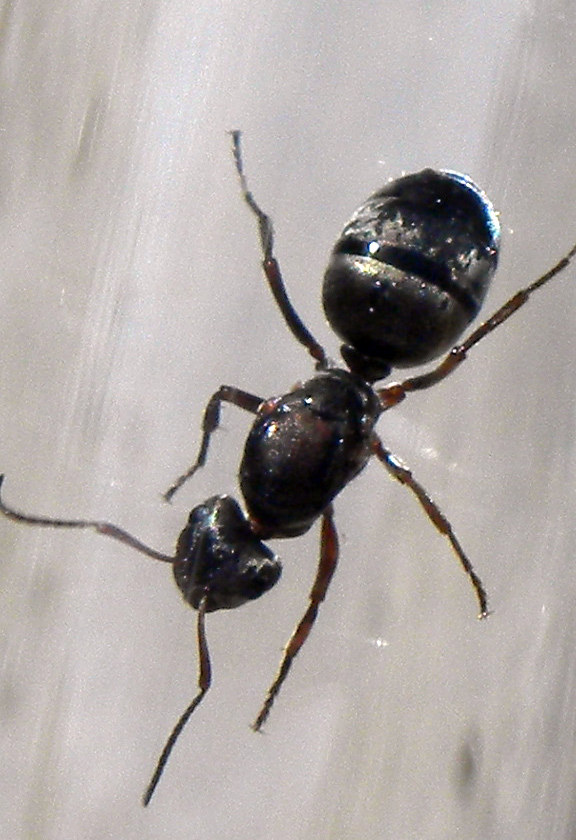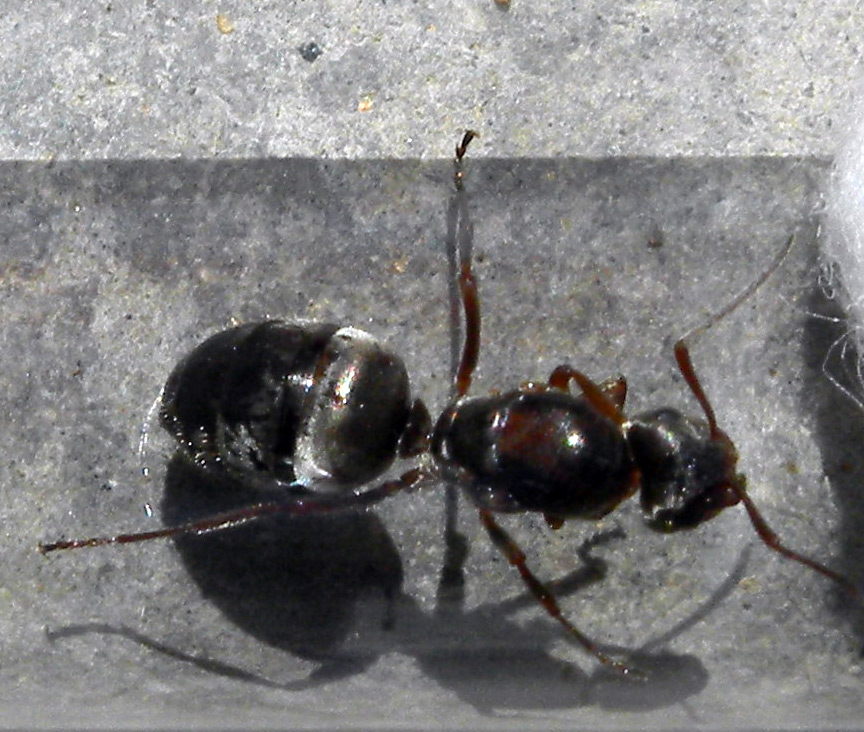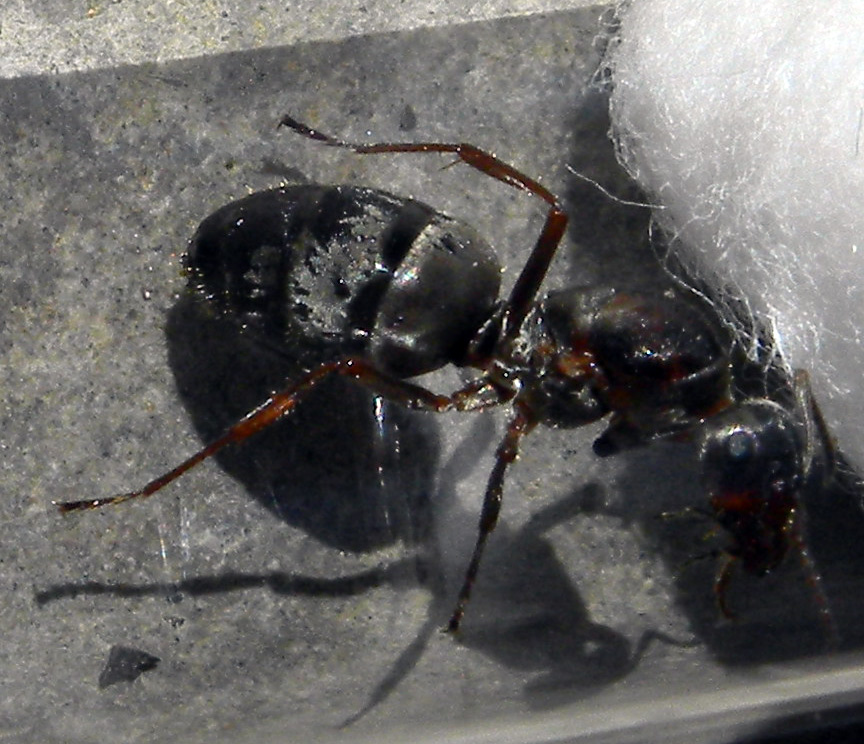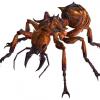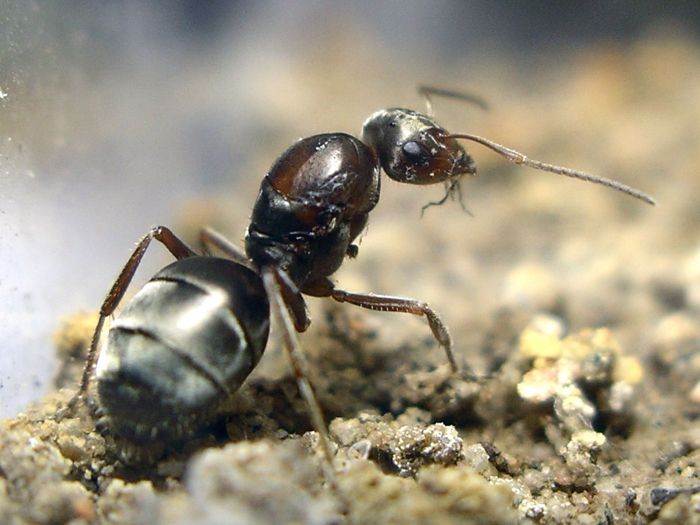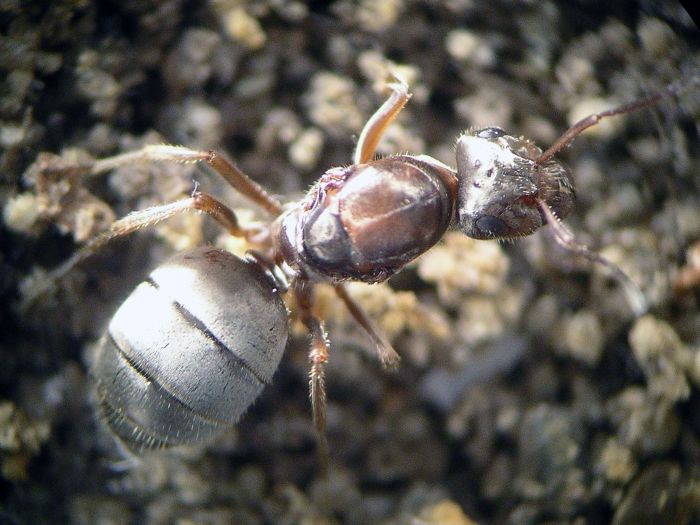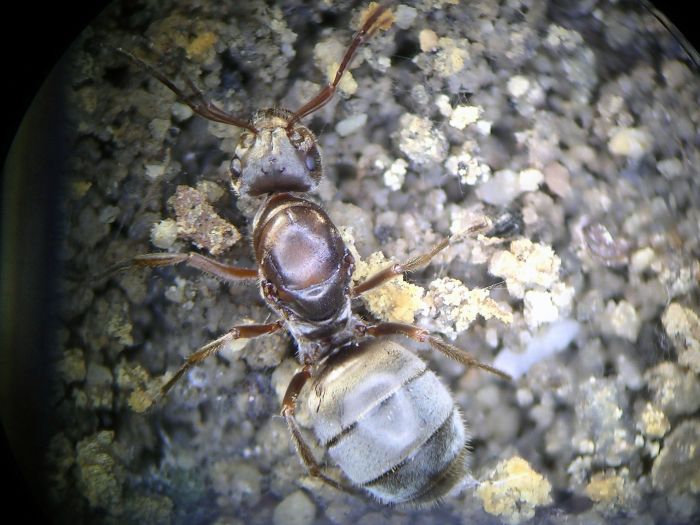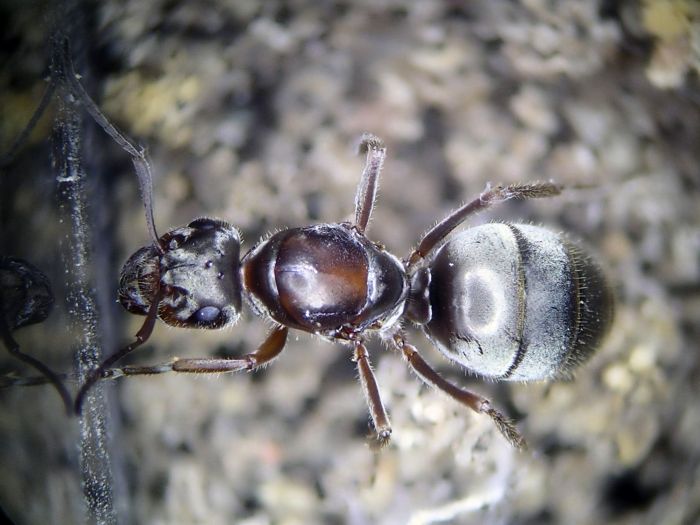2. Date of collection: April, 4 2015 1:45 PM
3. Habitat of collection: Sidewalk of rural area
4. Length (from head to gaster): 10-11 mm
5. Color, hue, pattern and texture: Brown and Black, Silervery black gaster
6. Temp: 80-83 Sunny, No previous rain
